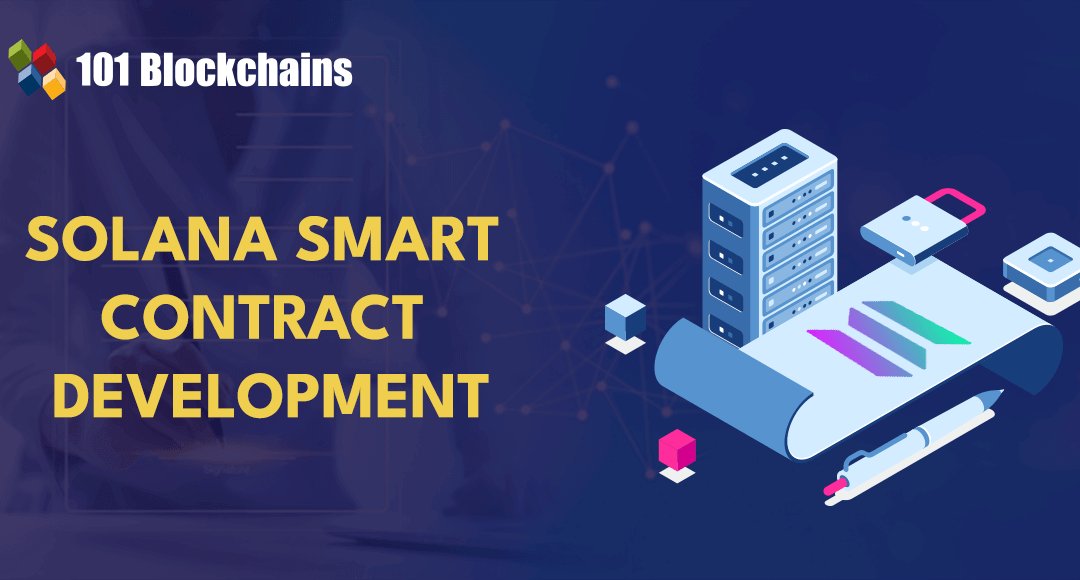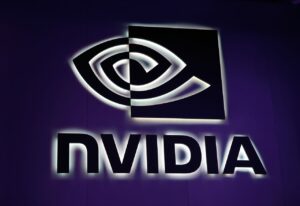Smart contracts are the primary components of the blockchain landscape. However, most of the smart contract development projects focus on the Ethereum blockchain only. While Ethereum delivers promising functionalities for creating smart contracts, it has been experiencing problems with scalability and cost.
Therefore, smart contract development on Solana blockchain has emerged as a trusted alternative. Why? Solana is a popular choice for blockchain developers to create decentralized applications and smart contracts. It arrived in 2017 and offered a promising solution for the scalability issues in existing blockchain networks. Interestingly, Solana has become the top favorite for developers, with the capability to process over 50,000 transactions per second.
Solana blockchain has been designed with an architecture that can help in creating dApps that could manage a large volume of transactions. The popularity of Solana smart contract development has soared higher in recent times, and the Solana ecosystem includes different projects including DeFi solutions and NFTs. It is the first blockchain to offer Proof of History consensus that helps it achieve high speed and scalability. Let us learn more about the architecture of Solana and why it is an effective choice for developing smart contracts.
Understand the complete smart contract development lifecycle and development tools with this Smart Contracts Development Course.
Understand the Basics of Solana
The first thing you need to learn before you find how to deploy smart contract using Solana is the fundamentals of Solana. It is a high-performance blockchain platform that supports dApp development and trading crypto exchanges. The meaning of ‘high performance’ with respect to Solana blockchain is the ability to resolve scalability and congestion issues. Solana utilizes a specialized consensus mechanism, Proof of History consensus, which helps in achieving faster block confirmation times with better efficiency. Proof of History consensus has made Solana one of the fastest blockchain platforms.
The review of Solana smart contract example would help you understand how it has emerged as the most efficient blockchain network in the world. Proof of History helps in using historical evidence for creating records that could verify that certain events happened at a particular instance in time. The unique consensus mechanism uses a high-frequency verifiable delay function for verifying events.
Upon processing a transaction or event, it has a unique hash and calculation that could be universally verified. The calculation works as a cryptographic timestamp that can help in determining the time when a specific event or transaction happens. Every node on Solana features a cryptographic clock, which helps in tracking the time of the network and sequence of events. As a result, nodes can offer better throughout and efficiency on Solana blockchain.
Architecture of Solana Smart Contracts
The next important highlight you must learn before developing smart contracts on Solana blockchain is the architecture of Solana smart contracts. Solana features an alternative to smart contracts with programs. Solana follows two distinct workflows for development of smart contracts and dApps. In addition, the answers to “What language is used in Solana smart contract development?” also point to simple alternatives, such as C, C++, and Rust. Solana programs or smart contracts can be deployed on the chain and operate with the ‘Solana Runtime’ feature.
Solana follows a completely distinct smart contract model as compared to traditional EVM-based blockchains. The code and the state of the smart contract code are combined in one contract in conventional blockchains. On the contrary, Solana smart contract development involves stateless smart contracts, which include the program logic only. External accounts can interact with the smart contracts deployed on Solana blockchain for storing data associated with program interaction.
This way, you can ensure logical isolation of contract code from state, which serves as a major advantage for smart contract development with Solana. Furthermore, Solana also offers the options of Command Line Interface and JSON RPC API for facilitating interactions with dApps. Decentralized apps could also interact with Solana programs and the blockchain by utilizing existing SDKs.
Build your identity as a certified blockchain expert with 101 Blockchains’ Blockchain Certifications designed to provide enhanced career prospects.
Workflow of Smart Contracts on Solana
The comprehensive review of a Solana smart contract example would help you understand the workflow of a smart contract architecture on Solana. The Solana Program is the section that helps in creating smart contracts with C, C++, and Rust and deploying them on Solana blockchain. In the second step, users would have to develop decentralized apps with the support of client SDKs alongside JSON RPC API for using Solana programs.
On top of it, the ‘Client’ section in Solana smart contracts focuses on creating decentralized apps for interacting with programs deployed on Solana blockchain. Decentralized apps could interact with different deployed programs to ensure transaction submission through client SDK. The ‘Program’ and the ‘Client’ sections of the smart contract work in collaboration with each other to develop an ecosystem of dApps and smart contracts for updating the state of the Solana blockchain.
Learn about the critical vulnerabilities and security risks in smart contract development with our Smart Contracts Security Course
Why Should You Create Solana Programs rather than Smart Contracts?
The benefits of Solana programs ensure that they are important alternatives to the traditional smart contracts on other blockchains. Solana is one of the biggest competitors to Ethereum even with the similarities with other blockchains. The primary reason to deploy smart contract using Solana is the benefit of cost-effective smart contract development.
Ethereum developers have been experiencing problems due to extremely high transaction fees, which can rise exorbitantly during network congestion. Solana offers better throughput than Ethereum as it can manage more transactions per second, thereby reducing costs.
The faster transaction speeds could ensure that Solana can compete against popular centralized payment processors. Solana programs can play a vital role in improving the speed and scalability of crypto networks alongside making them more accessible. With a crypto wallet that holds SOL tokens and Solana-based tokens, you can leverage the facilities of interacting with different apps available on Solana ecosystem.
Users can also exchange a token for another on a decentralized exchange of their choice or purchase NFT from a marketplace in the Solana ecosystem. Irrespective of the type of transaction you do on Solana, you would have to pay a smaller fee than the one you have to pay on Ethereum.
Learn about the fundamentals of smart contracts & solidity with this Solidity and Smart Contracts E-book.
What are the Development Tools in Solana?
The Solana ecosystem includes a broad range of tools and resources for developing smart contracts. Developers could use them to start smart contract development on Solana without extensive experience in programming with Rust or other languages. Most important of all, Solana has a robust developer community that offers support and other resources for developers who want to create smart contracts on Solana.
Another promising highlight of Solana is the Solana Program Library, or SPL, which provides a collection of pre-defined, modular programs. It can help in accessing different types of templates for creating smart contracts and dApps on Solana. However, the most noticeable aspect of developing smart contracts on Solana is the availability of the following tools that can support smart contract development.
Solana Explorer is one of the trusted tools to find answers to “What language is used in Solana smart contract development?” because it helps in exploring Solana blockchain. It provides a visual representation of Solana blockchain and enables developers to explore the details of smart contracts and transactions on Solana.
Solana CLI is a command-line tool that helps developers with flexibility for interaction with Solana blockchain and smart contract development.
Serum DEX is also an integral component in the Solana ecosystem. It is a decentralized exchange developed over the Solana blockchain. It offers a platform that helps in trading crypto assets and is developed completely on the foundations of Solana smart contracts.
The next important component in every Solana smart contract example points at Anchor. It is a reliable framework for developing Solana smart contracts in Rust programming language. Anchor also offers the advantage of high-level abstraction for creating smart contracts and ensuring simplification of the development process.
Solana Studio is another prominent tool in the Solana ecosystem for smart contract development. It is an IDE or Integrated Development Environment with a user-friendly interface for creation, testing, and deployment of Solana smart contracts.
Learn about the real-world examples of smart contracts and understand how you can use smart contracts with this free Smart Contracts Examples Presentation.
What is the Flow of Steps in the Solana Smart Contract Development Process?
The process of developing smart contracts on Solana can be challenging for beginners in the domain of crypto and blockchain. Anyone who wants to learn about Solana smart contract development must have apprehensions regarding different factors, such as complexity and time required for specializing in development of smart contracts on Solana. Here is an outline of the important steps involved in developing smart contracts on Solana blockchain.
-
Set Up the Solana Development Environment
The process of setting up the Solana development environment can be challenging for beginners. Users might experience difficulties in compiling and running the smart contract. Therefore, it is important to install Anchor, which is specialized for Solana Sealevel Runtime processing. In addition, you would need to complete the following steps for setting up the development environment.
The first step in setting up the development environment involves installation of Solana CLI and Rust. Solana CLI is an important tool to deploy smart contract using Solana, which allows interaction with Solana blockchain. Developers could download Rust from the official website and install it on their computers. You would also have to set up a Solana wallet for interacting with Solana blockchain. In addition, you must also connect to a Solana cluster after setting up the wallet.
-
Creating the Solana Smart Contract
After setting up the development environment, you could start development of Solana smart contracts. First of all, you have to choose the framework for building smart contracts on Solana. You could choose frameworks such as Anchor and Solana SDK according to your needs.
The recommended process for Solana smart contract development focuses on writing the smart contract code in the CLI. It should involve a definition of the functions, logic, and structures of the smart contract. You must also use the Rust compiler for compiling the smart contract code in the form of a binary file.
-
Auditing and Deploying Smart Contracts
After creating the smart contract, you can move towards deploying and auditing smart contracts. You have to use a testing framework such as the test suite in Anchor or the built-in test suite of Solana for writing test cases suited to your smart contract. The test cases for smart contract development on Solana must involve definition of input data, expected output, and the important assertions. You should also leverage the testing framework for running the test cases and ensuring that the Solana smart contract works as intended.
Comprehensive audits can help in detecting other errors, such as compilation issues and security flaws, to ensure quality in code. After comprehensive testing, you can utilize the Solana CLI for deploying the smart contract on the Solana blockchain. You would have to use the program ID and the account required for deployment of the smart contract.
-
Interactions with Solana Smart Contracts
The final aspect of a guide to developing smart contracts on Solana focuses on interactions with the programs. You can rely on different types of libraries and tools for interactions with Solana smart contracts. The most common approach for interacting with Solana smart contracts is the Solana CLI, where you can use different commands for interactions with Solana smart contracts. Solana also offers SDKs for interactions with Solana smart contracts. You could also utilize a web3 provider such as Solana web3.js for interactions with smart contracts on Solana.
Start learning Smart Contracts and its development tools with World’s first Smart Contracts Skill Path with quality resources tailored by industry experts Now!
Conclusion
The introduction to best practices for developing smart contracts on Solana emphasizes the simplicity of the process. Beginners can also learn Solana smart contract development without advanced technical expertise. The architecture of Solana smart contracts is different from the traditional smart contracts. You can enjoy the advantages of high performance and efficiency in the use of decentralized applications.
The value benefits of smart contract development with Solana also point to the facility of easier integration and lower fees. On the other hand, smart contract development with Solana is easier with the availability of developer tools and libraries. Learn more about the advantages of Solana for creating smart contracts and expanding the world of web3 right now.

*Disclaimer: The article should not be taken as, and is not intended to provide any investment advice. Claims made in this article do not constitute investment advice and should not be taken as such. 101 Blockchains shall not be responsible for any loss sustained by any person who relies on this article. Do your own research!









